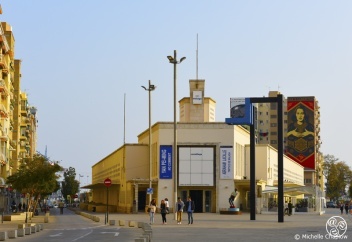Muelle de las Carabelas
Muelle de las Carabelas (Warf of the Caravels) is a waterfront exhibition with life-size replicas of Columbus's three ships: the Niña, the Pinta and the Santa María, built for the 500th anniversary celebrations. The construction of Muelle de las Carabelas was carried out by architect, Pluvio Fernández Heredia, and inaugurated on 15 March 1994.














